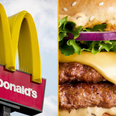Several years ago, we paid less than a tenner a month for every streaming show worth watching. Soon, subscribing to a handful of services could cost more than a premium satellite or cable subscription
Genericism is the term for when a brand name so defines a product that we use it interchangeably with the name of the actual thing – for instance, we say Hoover when we mean vacuum cleaner, iPod to refer to an MP3 player, and Google in place of search engine.
For a while, it seemed like Netflix did the same for streaming services – but that could be about to change.
This week, Netflix announced that they had lost 126,000 subscribers in the US, when they had expected to gain 352,000 new customers in the second quarter of 2019. And worldwide net gains were a disappointing 2.83 million, well below their forecasted target of 4.71 million.

The news probably comes as a shock to the average TV or movie fan – based on both word of mouth, and the scope and scale of their productions, it feels like Netflix was a constant and unstoppable juggernaut. In a letter to their shareholders, the company has written off any concerns, saying that Q1 subscriber growth had been so impressive that many of their forecasted new targets had actually already signed up. But the streaming world is about to face a massive shakeup, and if people are ditching Netflix, it could be a sign that viewers are beginning to take a very different approach to video on-demand services.
When Netflix launched in the UK in 2012, it offered a great proposition for consumers. Within a few years, for less than a tenner a month, you got access to a host of original shows that everyone was talking about, alongside a massive library of movies and programmes. There was content from pretty much every major film studio and TV network, and considering that a Sky entertainment, movies, kids and on-demand package (but not sports) comes to around £50, it was an absolute bargain.
Now, in 2019, things are very different. Amazon Prime Video is fully established with original hits like The Grand Tour, Transparent, and The Man In The High Castle – if you want to watch those, then you’ll have to fork out for Amazon as well.

But that’s not all. Disney+, the House of Mouse’s long-awaited VOD service is set to launch in the US in November, bringing must-see new Marvel and Star Wars TV shows that you won’t get anywhere else (in the UK, we already have Disney Life, which as of yet has no original shows but is the only place to see plenty of classic Disney movies).
And then Warner Bros. have their own service coming next year in the US, which will include all of their existing content – including one of Netflix UK’s consistently watched shows Friends. So when that eventually comes to our shores, you’ll need to pay for that as well if you want to keep watching Ross and Rachael when you are hungover (or pay about £10 plus P&P for some used DVDs off Amazon).
It doesn’t end there: Apple TV is also coming, with Steven Spielberg, Reese Witherspoon, Jennifer Aniston, Sofia Coppola, Kumail Nanjiani, and Damien Chazelle all signed up for various projects.
Think about it this way – if you are TV junkie, the sort of person that obsesses over Game of Thrones and Stranger Things and everything else, to keep track of the shows people are talking about, you are going to have subscribe to about five streaming services at least. And at around £10 each a month, that is going to add up. And it gets even worse if you into something a bit niche, and also need to sign up with something like the WWE Network, UFC Fight Pass or the anime-focused Crunchyroll.

Of course, it is possible not all these platforms will hit big. Yahoo and PlayStation both previously threw their hat into the original video content arena, and left with their tails between their legs. But whatever the case, the world of just getting everything beamed into one box in the corner of your living room for one monthly fee is going to seem like a rather painless option, as opposed to juggling multiple subscriptions, passwords and devices.
That’s what makes the fact that Netflix are losing subscribers so interesting. A lot of people are going to have make a decision about which services they can actually pay for. Anecdotally, you often hear people moaning that Netflix ‘isn’t as good as it used to be’, especially when it comes to its back catalogue – we could easily be seeing customers becoming more savvy, bouncing between services, binging series then jumping to another company when they have something new worth watching.
The great streaming war is coming, and Netflix won’t want to be taking causalities before the battle has even become.















































